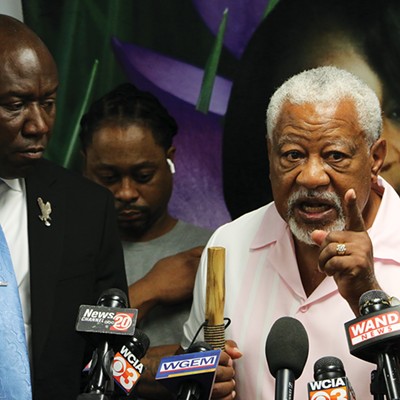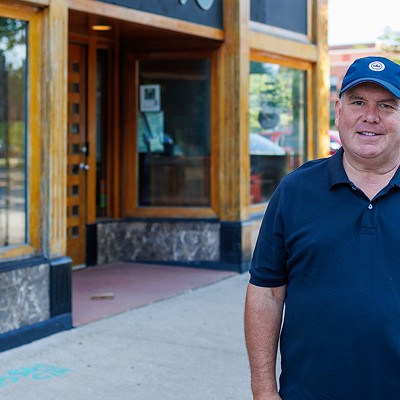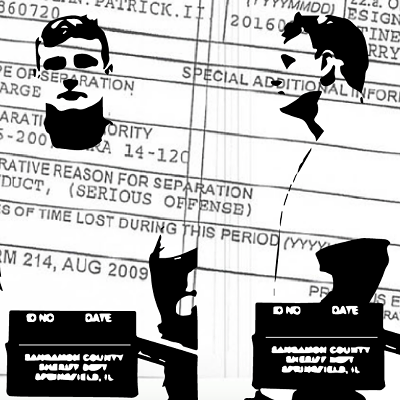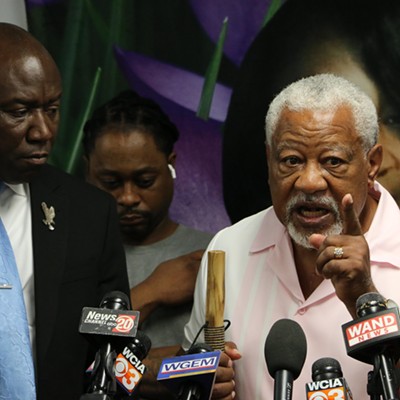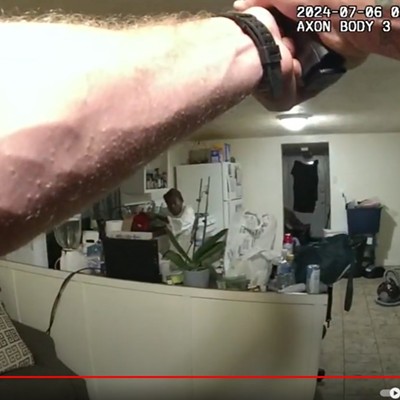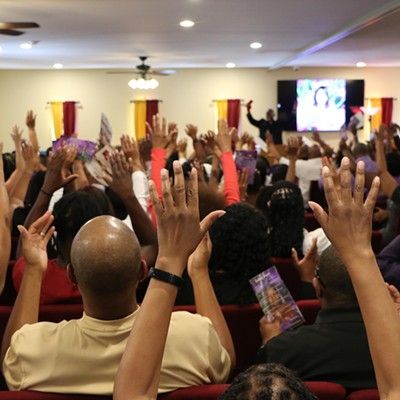The president of the union representing Springfield firefighters says he is encouraged by Mayor Misty Buscher's plan to form a commission that will examine options for improving emergency medical services.
Whether that group will make more progress than a panel with the same task under the previous mayor, Jim Langfelder, remains to be seen.
Also uncertain is whether the yet-to-be appointed commission will result in the city starting up a municipally operated ambulance service that would supplement services provided by the three private ambulance operators authorized to transport Springfield patients to local hospitals.
"There's a little more awareness now," Kainan Rinaberger, president of Springfield Fire Fighters Local 37, told Illinois Times. "I think there's going to be more substance to these talks. Everybody realizes there's a problem."
The union has been vocal about the potential benefits of Springfield adopting a city-operated ambulance system – staffed by Springfield firefighters who already are certified as paramedics, the highest emergency medical technician level.
The city's Aug. 20, 2023, settlement of a 2021 unfair labor practice dispute with the union included the city agreeing to form a labor-management committee "to explore the cost efficiencies and improvements to public safety" associated with a city-operated ambulance service.
The City Council agreed at that time to give firefighters a 1% pay raise connected with the union's agreement to continue a practice begun in 2021 in which paramedic-level firefighters ride inside private ambulances when needed and care for critically ill patients during transport to hospitals.
The council opted to include $280,000 in the fiscal year budget that began March 1 for the purchase of an ambulance and $250,000 for ambulance-related equipment and supplies.
But opinions on the council are mixed as to whether the city should start its own ambulance service and whether a service would pay for itself through private billing and federal subsidies. The city isn't obligated to spend the $530,000 set aside in the budget.
Any future decision on a city ambulance service should be "data driven," city spokesperson Haley Wilson said.
The commission formed by the mayor will collect and analyze that data, Wilson said. She said its members will include representatives from the union, fire department, Springfield Memorial Hospital, HSHS St. John's Hospital, medical groups and the 911 dispatch center operated by Sangamon County.
A timeline for the commission's work, whether the panel's meetings will be public and whether public hearings will be held haven't been determined, Wilson said.
Rinaberger said the union looks forward to participating, but he believes there are plenty of data to justify a city-operated service and 200 union members appropriately certified "who would be willing to start tomorrow if we had a vehicle to transport."
A January 2022 analysis of Springfield Fire Department operations by a respected consulting firm in Washington, D.C., the Center for Public Safety Management, said 58% of the department's calls for service were for emergency medical issues and not fires.
"In the past, fire departments made EMS calls for service," the report said. "Today, many fire departments are primarily EMS service providers that also perform fire duty."
A draft report prepared by SFD and circulated in December said the department has experienced a 43% increase in EMS call volume since 2010, but the number of people in the EMS system responding to the calls has remained static.
The report said the number of paramedic-staffed ambulances provided by the three private services – nonprofit Medics First of Springfield and for-profit America Ambulance and LifeStar Ambulance – has decreased, resulting in increased wait times for residents.
"In 2022, a near daily occurrence (350 times), over 30 minutes elapsed before an ambulance was even available to be dispatched to an emergency," the report said.
That same year, an ambulance reached the scene of a fire or other potential health emergency in five or fewer minutes 8% of the time in 2022, the report said.
Rinaberger said the union broke down that percentage by ZIP code. The percentage of time in 2022 that the "incident to first arrival" was fewer than five minutes varied from 10.8% in 62701 to 7.5% in 62702, 7.9% in 62703, 3% in 62704, 0.8% in 62707, 1% in 62711 and 0.5% in 62712.
First arrival time was less than five minutes less than 1% of the time in the other ZIP codes in Sangamon County.
Moreover, Rinaberger said data from the 911 center showed that ambulances weren't immediately available to respond to Springfield emergencies 1,258 times, or an average of 3.4 times per day, in 2023, and 176 times from Jan. 1, 2024, through March 31, 2024, an average of twice a day.
The numbers don't show how often an ambulance was available and responded a few minutes later, he said.
A Facebook post by the union about the ambulance situation and the lack of a standby ambulance at a specific fire in March attracted hundreds of comments. But spokespersons for Medics First and America said they could have made an ambulance available for that incident if the 911 system had sent out the alert it normally activates when the number of available ambulances is becoming low.
Ambulance crews can be taking a meal break or dealing with another situation that takes them out of service temporarily, but they can return to service at a moment's notice, Medics First Regional Chief Executive Officer Greg Chance said.
Because of local variations in how EMS systems are operated, it is difficult to compare the Springfield data to other communities and national standards. There currently are no federal or state laws that regulate EMS response time performance.
"Requirements are typically set by local jurisdiction government leaders or system administrators and are based on history or estimated public expectations," according to a 2011 report by the University of Oklahoma.
Springfield's ordinance dealing with ambulances dates to 2008. It says ambulance services authorized by city officials to serve city residents must provide a minimum total of six paramedic-staffed ambulances – among the existing providers – 24 hours a day and seven days a week.
But city code "contains no provisions for performance evaluations, metric reporting, cost sharing or any other requirements," according to the Center for Public Safety Management report.
The report also notes that the six-ambulance requirement in the code "does not further look at whether those numbers can be adjusted up or down on nonpeak, overnight hours in favor of additional units during the peak hours of the daytime."
The report says national studies have shown that only 20% of calls for service to EMS providers require "advanced life support intervention" from a paramedic.
Chance, regional chief executive officer for Medics First, a division of Peoria-based Advanced Medical Transport, and America Ambulance President Susan Zappa welcomed the formation of the EMS commission.
They said data needs to be more thoroughly evaluated before public money is spent on a city-operated service. They also said such a service could threaten the financial viability of their own businesses.
"Let's make sure we look at the whole picture and get perspective from all stakeholders," Chance said.
They said city leaders need to consider whether it would be more effective to make more frequent use of ambulances staffed by EMTs with training at less than the paramedic level.
They estimated that almost 60% of Springfield's EMS calls can be handled adequately by ambulances with that type of staffing.
Such staffing would make it easier to provide more ambulances on the street, they said. They said their two organizations together provide more than the number of ambulances required by city code.
Roger Campbell, the Centralia-based president of LifeStar, didn't respond to a request for comment. LifeStar is facing thousands of dollars in potential city fines for failing to provide the required number of ambulances for at least six months in 2023.
Christopher Mueller, the county's 911 center director, said he won't take a stand on whether Springfield should start a municipal ambulance service.
"The ultimate goal is the citizen," he said. "The data shows we do need more resources. From our perspective, we don't want people waiting for any resource."
Dean Olsen is a senior staff writer at Illinois Times. He can be reached at 217-679-7810, [email protected] or twitter.com/DeanOlsenIT.





